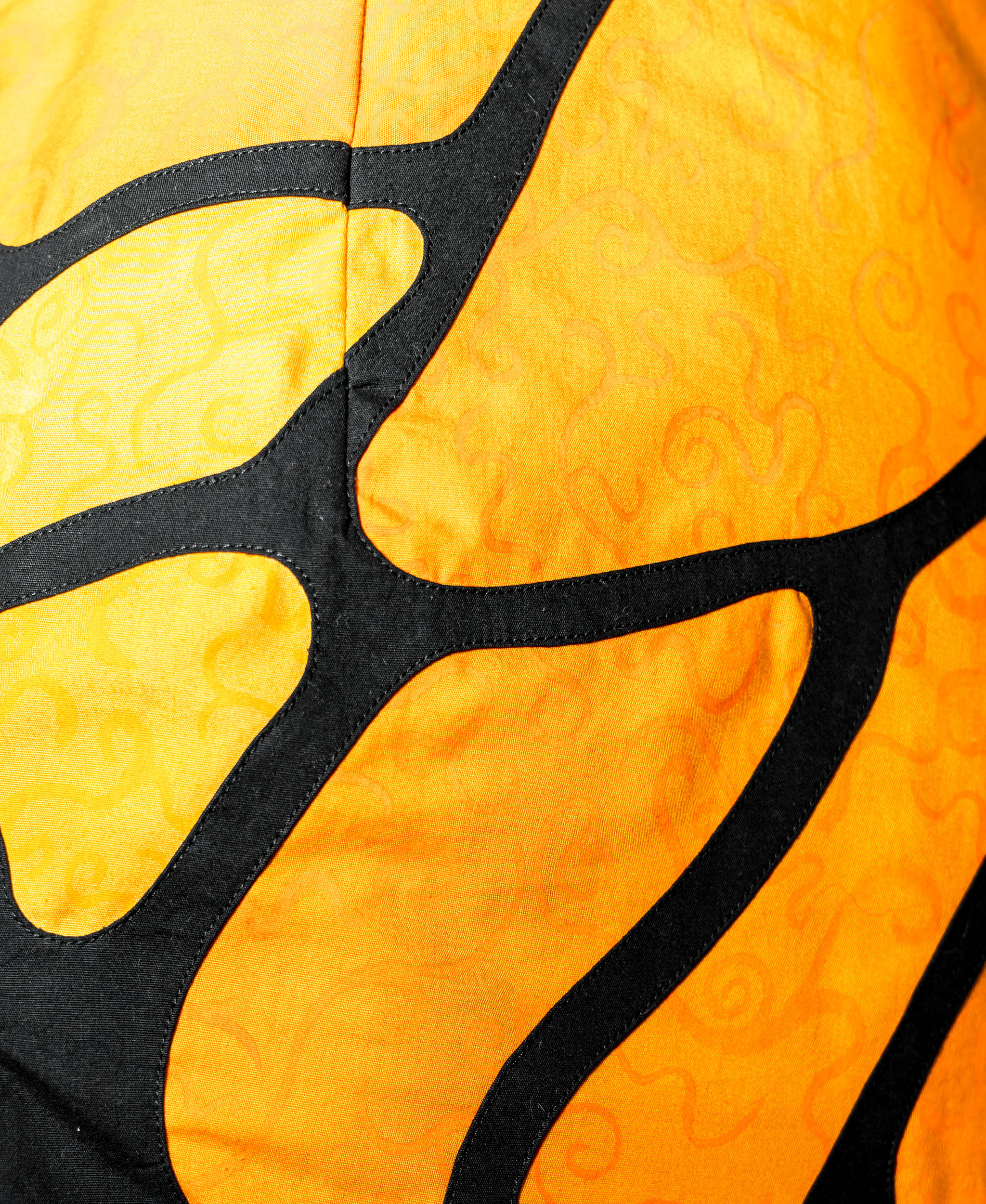My project is a metamorphosis-inspired transformational dress with a drop-down bodice that replicates the process of a butterfly emerging from a chrysalis. It falls into the costume focus area, as it is specifically designed for theatrical use to create a “wow” factor displayed during a performance that mimics the metamorphosis in nature. Further research drew inspiration from quick-change features in figure skating and theatre costumes that tell a story. I was intrigued by the intrinsic nature of transformational processes to life and wanted to reflect metamorphosis both through representation of the monarch butterfly and the quick-change action of the garment’s functionality. The transition from the colourless chrysalis to the butterfly has become a metaphor for transformation specifically linked to butterflies. The use in fashion is commonly abstract, but includes focus on the iconic wing shape, colour, and pattern which I aimed to maintain. Using 100% organic cotton that was sustainability sourced to link to the environmental considerations of my project. My costume mimics natural elements of the chrysalis, antennae, and wing patterns to create a decorative costume with elements that can be admired on stage. Dyeing my fabric orange, reverse-appliqueing and topstitching patches, hand-painting curly details, and topstitching tucks are decorative techniques I utilised without protruding embellishments affecting the change. The development of 19th century magic acts with assisted changes in theatre to 20th century unassisted changes provided functional inspiration for my design to be self-operated. This posed a challenge to ensure an easy yet effective process on stage. Initially experimenting with magnets and Velcro, I utilised snap closures to effectively secure the bodice. This allowed for a rapid change on stage that is strong until the change is required, is relatively silent and hidden, and does not separate the garment into multiple pieces. A focus of both “before” and “after” looks was important for my project. I strived for decorative features in both of my garment looks and making a plain white “before” design involved considering how I could use fabric manipulation to draw interest. I particularly enjoyed matching every last tuck into the seam to line up. The process of designing and constructing my project was the most rewarding part of the textiles and design course as I got to see my sketch come to life!

